For centuries, the humble potato has graced our tables and senses, whether as a creamy puree or through the sizzle as they hit the pan on a stove, transforming into golden, crispy delights. Beyond its kitchen-related uses, this unsung hero of the culinary world has played a pivotal role in historical events, science, and even sparked controversy.
Let’s pay a tribute to this edible tuber and then bite our next wedge.
Today’s Focus of Attention is reader-supported. We sometimes include products we think are useful for our readers. If you buy through links on this page, we may earn a small commission.
Potatoes Through the Ages: European Odyssey and Historical Impact
Potatoes can go with almost any dish as puree, salad, hash browns, or chips. But they can likewise be the stars of the menu, such as stuffed baked potatoes, a cottage pie, gnocchi, latkes, or a potato-based soup or stew. Everybody loves spuds. Who doesn’t?
The Potato Unpeeled
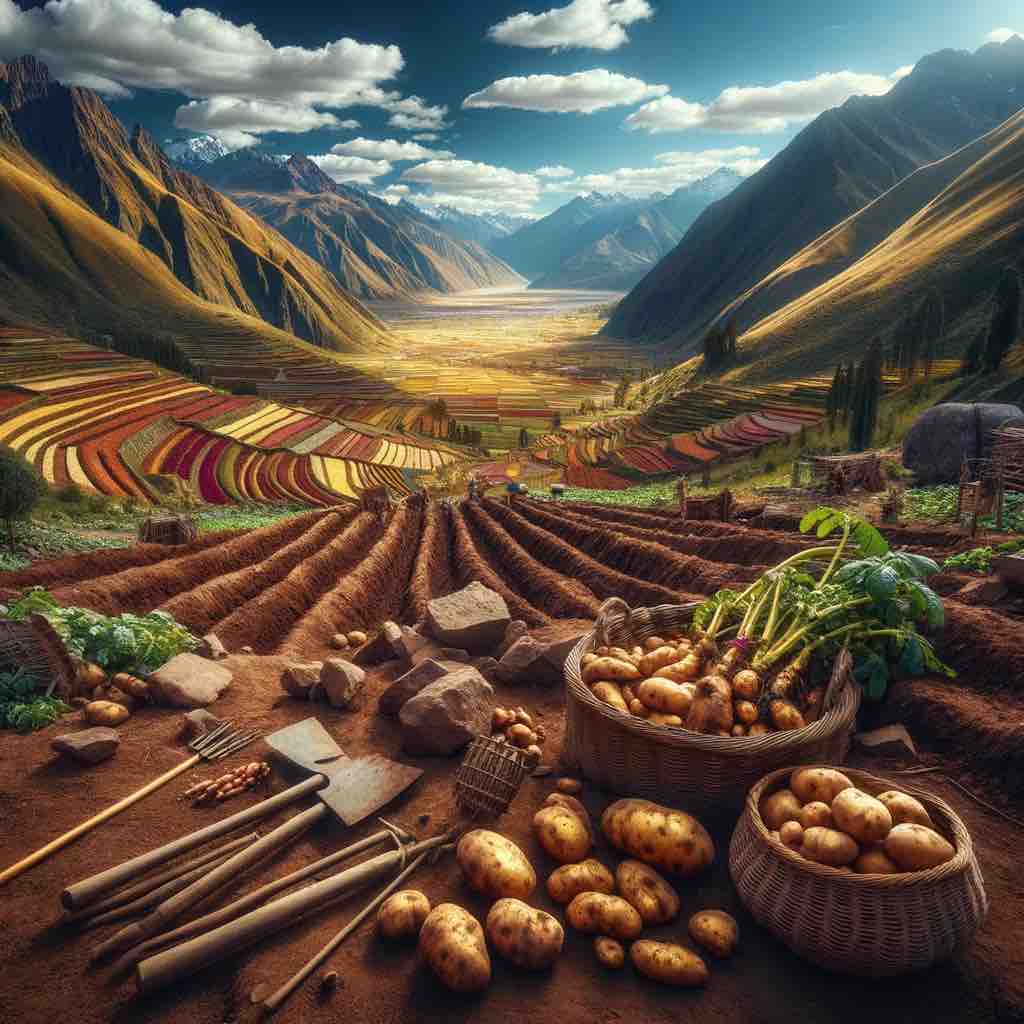
Potatoes originated in the Andes Mountains of South America, in the region spanning modern-day Peru and Bolivia. The Aymara and Quechua people are amongst the earliest indigenous groups who have cultivated them for 8,000 to 10,000 years.
But it was the Inca civilisation that implemented advanced cultivation techniques, created diverse varieties, and developed methods for freeze-drying potatoes for storage.
When the Spanish conquistadors arrived in that area, they ‘discovered’ the potato. And the whispers say that either Gonzalo Jimenez de Quesada or Pedro Cieza de Leon introduced it to Spain in 1570, the first country to receive and cultivate the starchy root.
However, the Europeans suspected and accused the plant of causing some of the rampant diseases of the time, such as typhus, smallpox, dysentery, and measles.
A Hero in a White Coat
In the darkest hour, a knight emerged and saved the potato from being locked in a castle’s tallest tower.
Such a heroic individual was Antoine-Augustin Parmentier, a French pharmacist who recognised the tuber’s potential, shed its dubious reputation, and transformed it into a celebrity.
He even hosted elaborate potato-centric banquets for the French elite, with potato blossoms adorning the tables and buttery dishes delighting their palates.
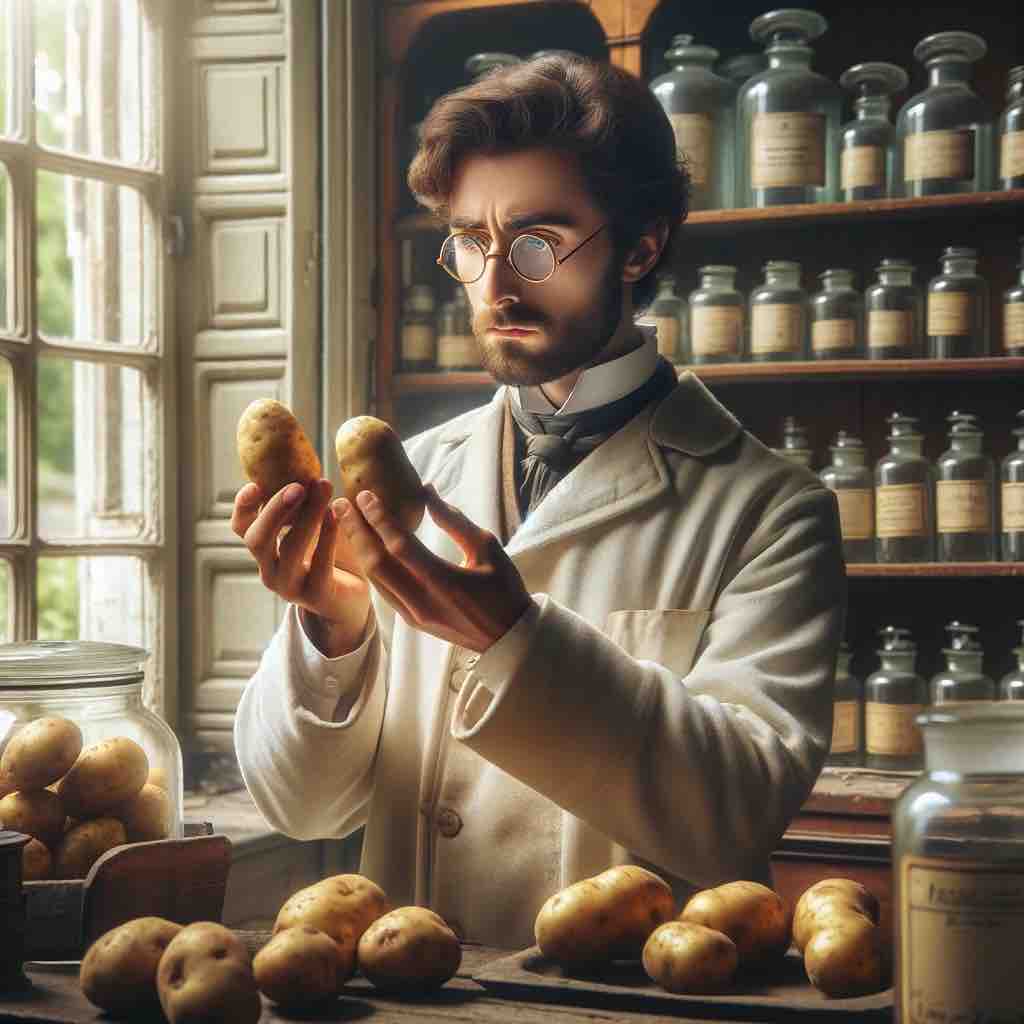
From Peasant Fare to Feeding Strategy
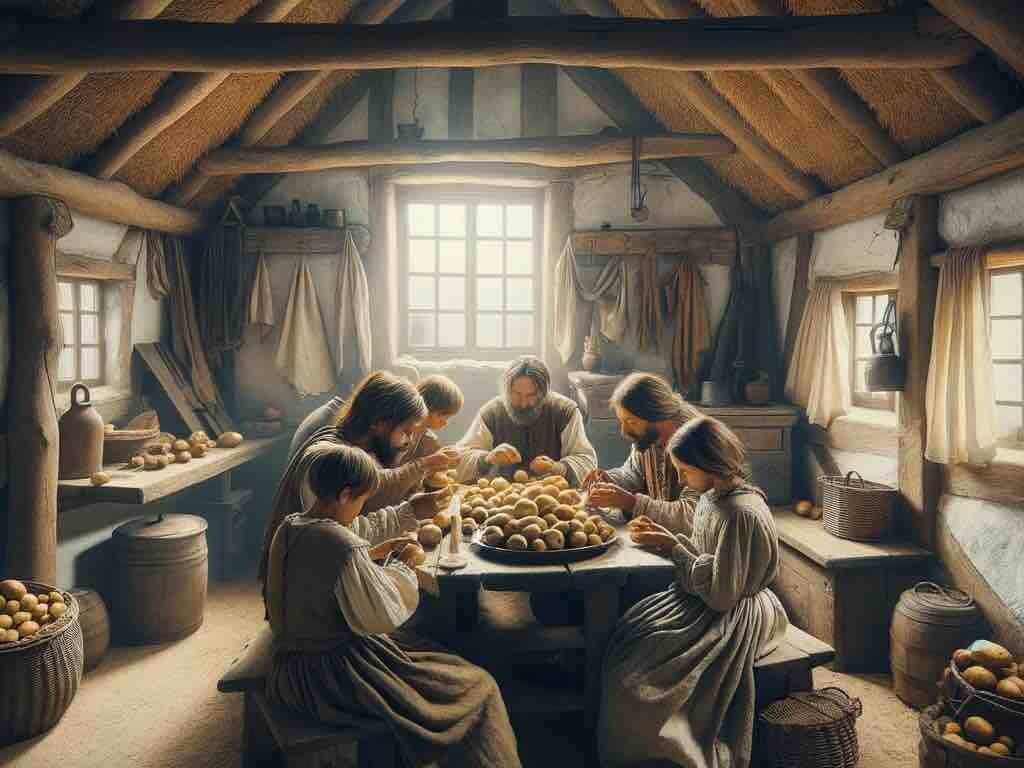
In the beginning, the potato fed livestock and the impoverished. But after proving to be reliable and nutritious, Prussia encouraged massive cultivation to combat hunger.
With a demographic boom in Europe, the potato’s image improved, and in the 1700s, it was instrumental in feeding a growing population.
Despite helping the old continent blossom, the potato still carried the stigma of being the daily bread for the destitute.
The 16th- and 17th-century gastronomy echoed the spirit of the Italian Renaissance and prioritised luxury ingredients and elaborate techniques. The potato didn’t fit that mould.
The Ascent of Restaurants
Everything changed in the 1800s when European cuisine shifted towards simpler dishes, offering the opportunity for the humble potato to rise above its earlier reputation as mere peasant food. Renowned chefs began experimenting and showcasing the potato’s versatility with delicious creations, including creamy potato-based soups and elegant entrees.
Restored to a deserved position, the potato spread throughout Europe, and several countries dedicated vast swathes of land to its cultivation.
But relying on one crop alone proved to be the worst strategy.
“The potato eaters, for example, see them not only observing themselves in the act of eating, but surrounded by the stillness and simplicity of this humble meal, they become part of something much larger.”
Vincent Van Gogh
A Catalyst for Catastrophe
In the 19th century, Germany, Ireland, Russia, France, Prussia, and Belgium were powerhouses in potato farming, vital for their populations.
In Ireland, for instance, the potato was a staple for most of the population due to its high caloric density and low production costs.
But the country’s sole-crop economy set the stage for mass starvation between 1845 and 1849.
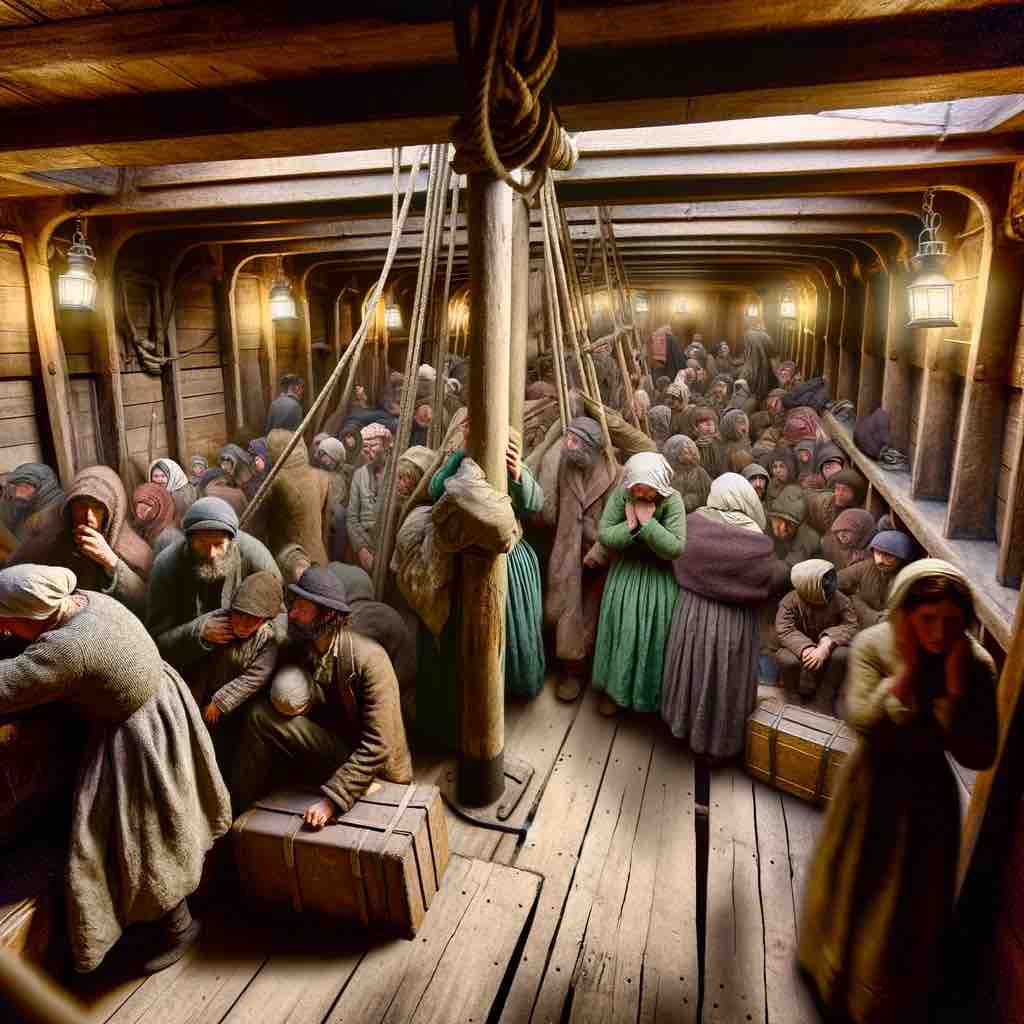
Irish Potato Famine: The Blight That Changed Lives
This calamity resulted from the spread of a fungus-like organism, which ravaged crops across Europe.
But the weight fell heaviest upon Ireland as a consequence of a disproportionate dependence on a few potato varieties.
The once fertile fields laid barren.
About one million people succumbed to hunger and related illnesses, resulting in around 2 million Irish crossing the Atlantic and seeking refuge in the United States.
Overcrowded ‘coffin ships’ witnessed the struggles, sacrifices, and deaths of countless migrants. The pungent smell of the desperation of weary travellers clutching their meagre belongings blended with the crying of starving babies.
This mass exodus altered the demographics of both Ireland and the US, where the Irish community shaped the cultural and social landscape of America.
Through the Lens of Art: Portraying the Famine
Literature could not turn a blind eye to such a vast diaspora. Novels, poems, and memoirs surfaced throughout the years to depict the migrant experiences in those times of famine, death, and suffering.
Novels
“Trinity” by Leon Uris is a historical novel tracing the lives of three Irish families across generations.
“The Hungry Road” by Marita Conlon-McKenna tells the poignant story of a young boy and his family forced to flee Ireland and the hardships they faced during their immigration.
“Out of Ireland,” from the hand of Christopher Lehmann-Haupt, is a fictionalised account inspired by the author’s own ancestors, chronicling an Irish boy’s journey to America during the famine.
Poetry
“Erina” by Eavan Boland explores the grief and resilience of Irish women caught in starvation.
“The Famine Years,” written by Seamus Heaney, is a collection of poems that delve into the raw emotions and enduring legacy of the Blight.
Memoirs
Frank McCourt’s Pulitzer Prize-winning memoir “Angela’s Ashes” describes the author’s underprivileged childhood in Ireland and emigration to America.
These works offer diverse perspectives and valuable insights into the heartbreak, resilience, and cultural impact of Irish immigration during the Potato Famine.
“For the discovery of this root, even nations will contend, and it will cause the blood of millions to be spilled.”
Sir Walter Raleigh
Health Risks of Potatoes
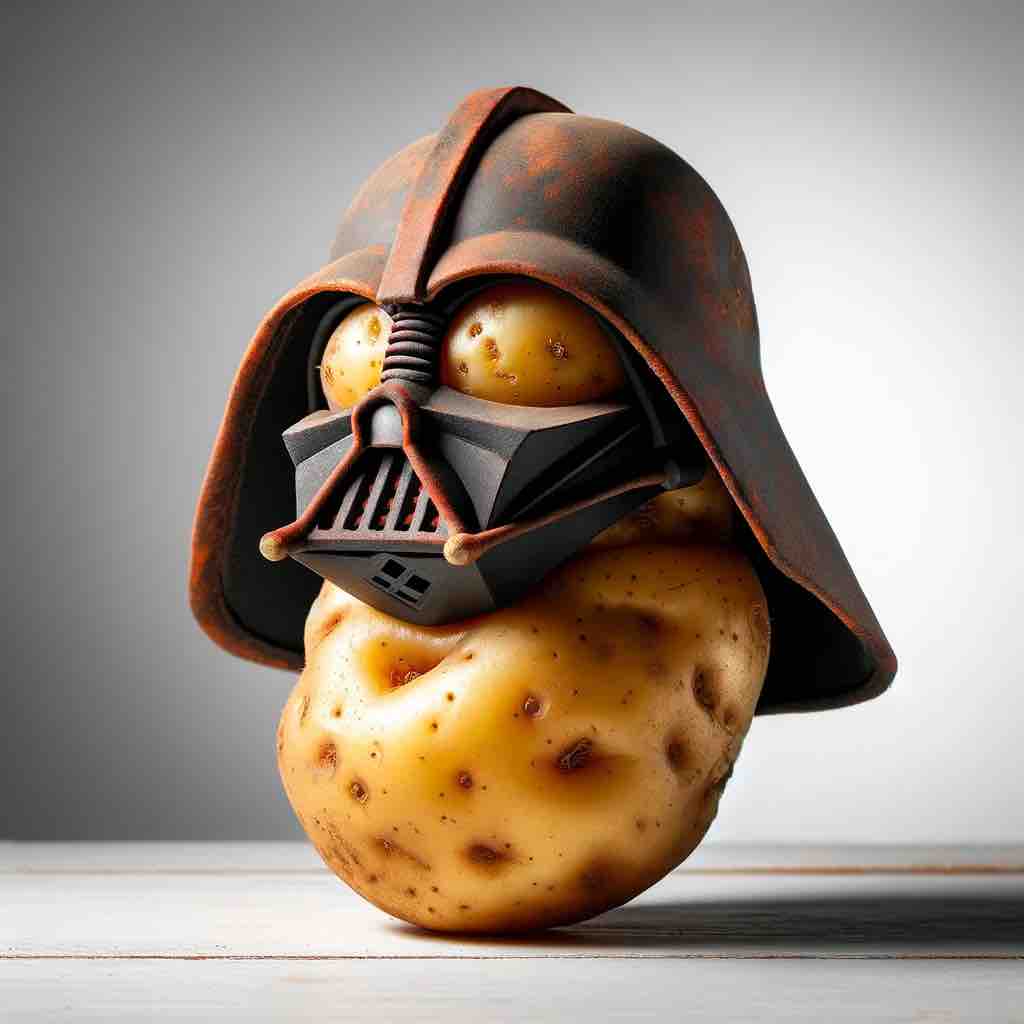
While potatoes are a staple of many diets, these beloved tubers have a dark side. Solanine, a natural toxin found in the green parts of the potato, may cause serious health issues if you ingest it.
Its poisoning symptoms include nausea, diarrhoea, and headaches. Severe cases manifest dizziness, hallucinations, paralysis, and hypothermia.
This glycoalkaloid, also present in tomatoes and aubergines, acts as a natural defence mechanism to protect the plant from pests and diseases.
Amount Matters
Mild solanine poisoning occurs at doses of 2–5 mg per kilogramme of body weight, while fatal cases involve 3-6 mg per kilo.
If you suspect solanine intoxication, seek medical advice immediately.
Important Considerations
Most people have low levels of solanine through normal potato intake and are unaffected, but children and individuals with digestive problems might be more sensitive to the toxin effects.
Removing green areas, sprouts, and peeling potatoes decrease solanine quantity, but cooking does NOT destroy solanine.
The Key to Safe Consumption
Pick the right ones by choosing healthy, undamaged spuds, since bruises encourage greening.
Considering storage
- The perfect environment is complete darkness. Light triggers chlorophyll and solanine production. Thus, find the coolest, darkest spot in your home.
- Aim for a temperature between seven and 10 degrees Celsius and avoid storing below 4 degrees Celsius, as this turns potatoes’s starch into sugar.
- Ideal humidity is around 90–95% to prevent potatoes from shrivelling.
- To inhibit mould, the tubers must receive good airflow.
- Stay away from plastic bags, as they trap wetness. Instead, opt for paper ones or baskets.
- Do not wash potatoes before storage, as moisture promotes spoilage.
Now let’s move on to the next frontier.
“Potatoes are one of the last links between the world of the living and the world of the dead. To plant potatoes is to conduct a dialogue with the Earth.”
Potatoes in Space: NASA Experiment
Not only did the humble potato conquer Earth, but it also took to the stars as the first vegetable grown in space at the end of the 20th century.
Voyage Into The Unknown
In 1995, the Space Shuttle Columbia (STS-73) experimented with potatoes to see how they grow and produce edible tubers in microgravity. This endeavour was part of a larger research effort to understand food production during long-term Cosmos expeditions.
Researchers planted potato seeds in a specialised enclosed growth system called ‘Astroculture,’ and during the mission, the plants produced tubers, like those on Earth but smaller.
Perhaps, as the astronauts watched the familiar potatoes thrive in the vast emptiness, it brought a comforting touch of home to those on the ship.
Why Was It Important?
Going to Mars or beyond requires that supplies don’t run out along the journey. So, this experiment laid the groundwork for the next generations of space travellers and future out-of-Earth colonisations.
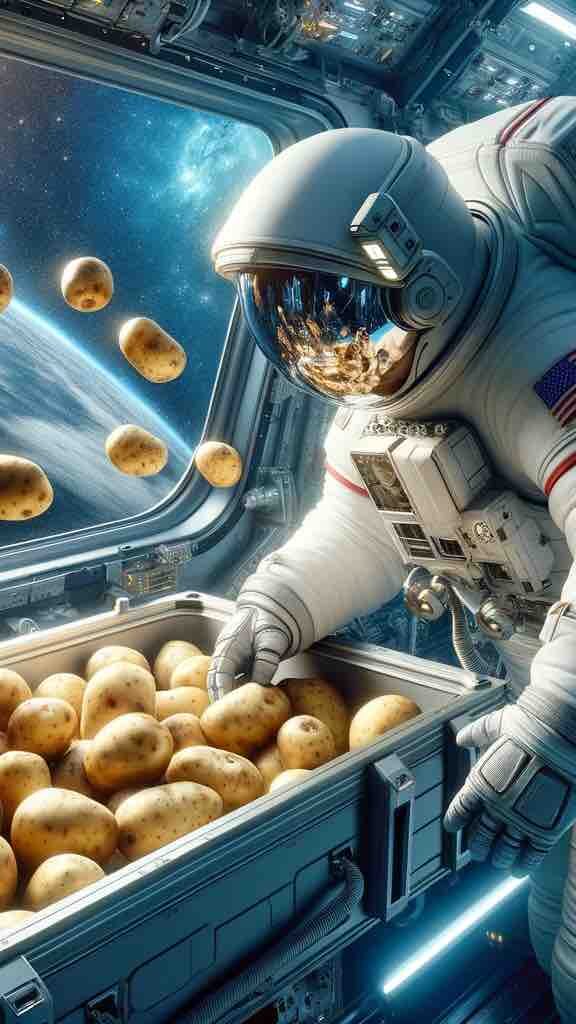
“The people must be made to understand that the potato is a gift from heaven that can serve in many ways for their benefit.”
Frederick the Great of Prussia
The Evolution of Mr Potato Head
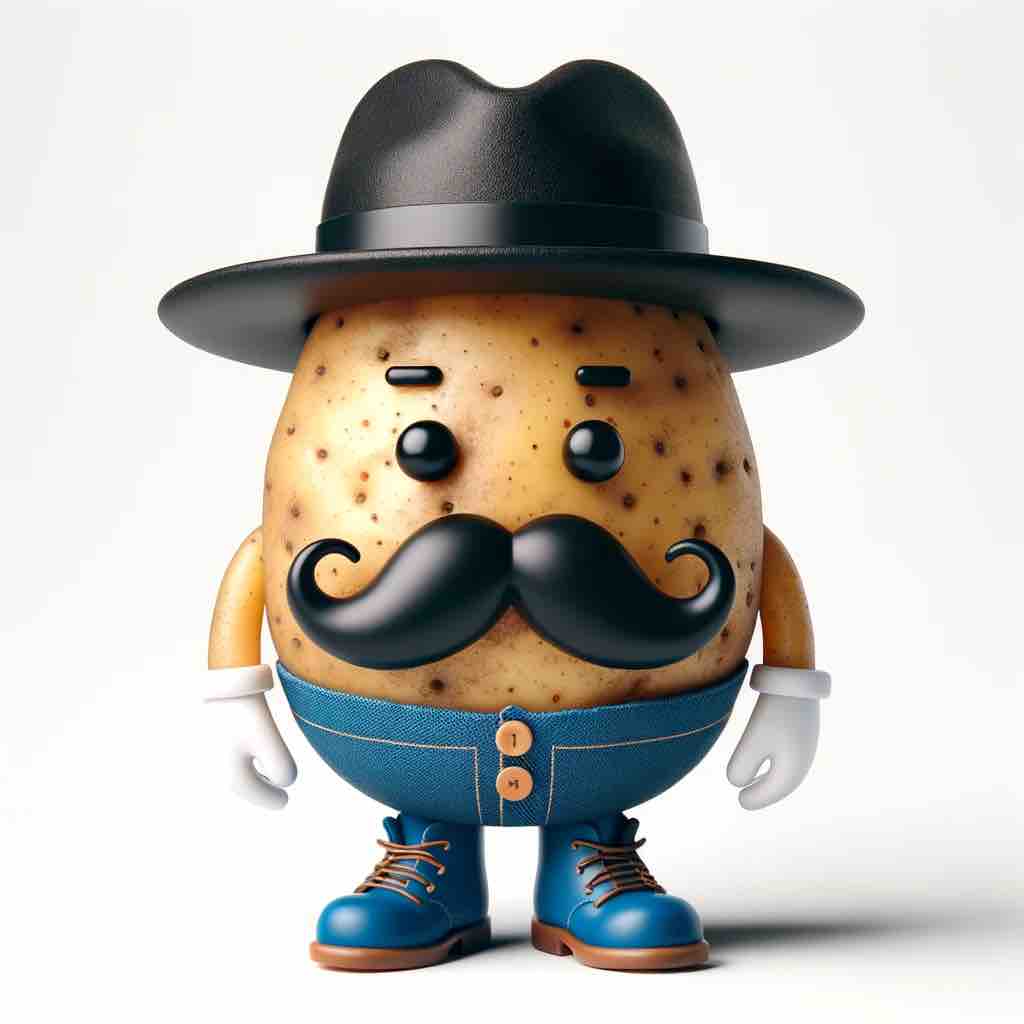
Long before becoming a popular plaything, Mr Potato Head was a creative kit with accessories to make a potato look alive.
1949: The Origins
Mr Potato Head was the brainchild of George Lerner, a toy designer from Brooklyn who initially marketed it as a set of facial parts and attachments to be used with an actual potato.
The Hassenfeld brothers (who later founded Hasbro) purchased the production rights in 1952.
Challenges and a Plastic Revolution
Due to concerns about rotting and sanitation issues with vegetables, safety regulations prompted a major transformation in 1964.
Hasbro introduced a plastic potato body, ensuring protection and extended playtime, and launched a heavy marketing campaign, making Mr Potato Head the first toy advertised on television.

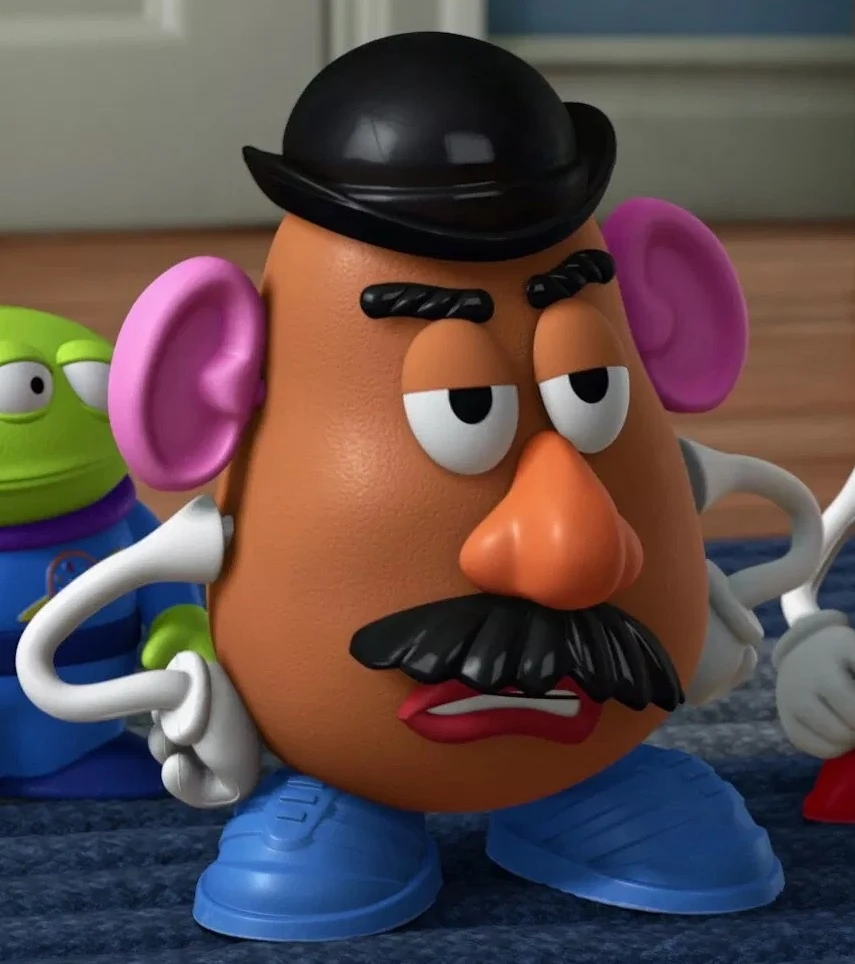
This opened the doors for more accessories and expansion with the arrival of Mrs Potato Head in 1953, followed by a growing family and various themed sets.
Mr Potato Head’s versatility, humour, and adaptability made it a beloved cultural icon for generations. And his appearance in Toy Story further cemented his place in popular culture.
Potato Oddities
Throughout history, we have used potatoes as food, but here are a few strange uses for spuds you might not know:
- Fashion Accessories: During the 18th century, powdered wigs were all the rage in Europe. Potato starch was a cheap alternative to expensive wheat flour for wig powdering.
- Medicine: Potato poultices (made from mashed or grated spuds) were a folk remedy for various ailments. People applied them to burns, boils, and skin inflammation for their purported soothing properties.
- Removing Rust: The oxalic acid in potatoes helps remove corrosion from metal. Try rubbing a potato on a rusty object or soaking the item in potato juice.
- Glue Substitute: The starch creates a paste that can work as a simple adhesive for paper.
- Postage Stamp: While not widespread, historical records have revealed the use of slices of potato as makeshift stamps during times of urgent need.
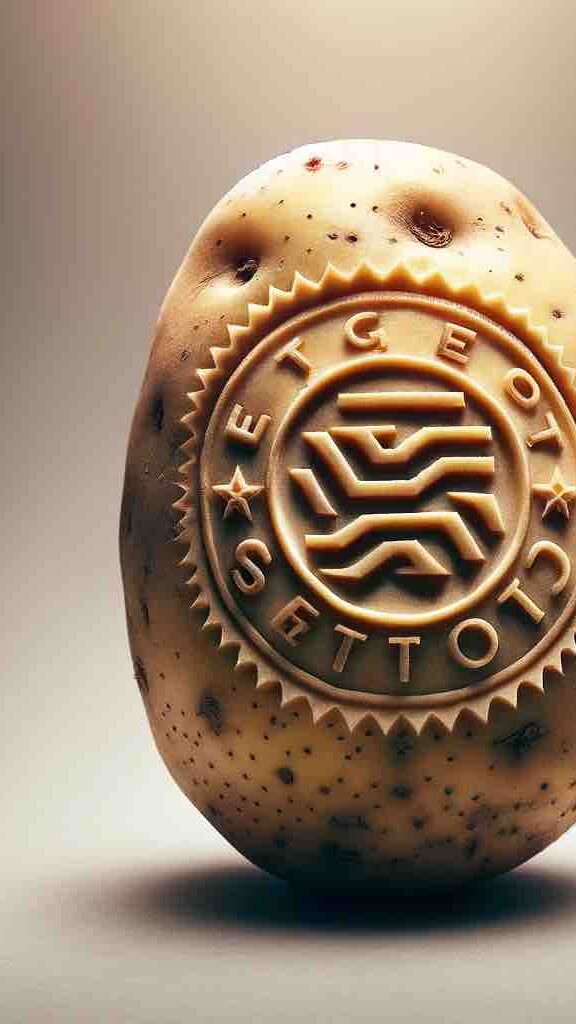
“I cannot imagine a world without potatoes – indeed, I do not wish to imagine such a place. The potato, for its part, does everything but speak.”
Julia Child
Beyond the Dinner Plate
Far from being just another item on the grocery list, the potato has been a silent witness and participant in human history, offering lessons in adaptability, innovation, and the power of persistence. Whether it’s experimenting with a new recipe or sharing these fascinating facts, let’s cultivate a deeper appreciation for this remarkable tuber that has fed entire nations, inspired innovations, and even reached beyond our planet.
I hope you’ve enjoyed this ‘spudtacular’ journey on how potatoes changed the world.


